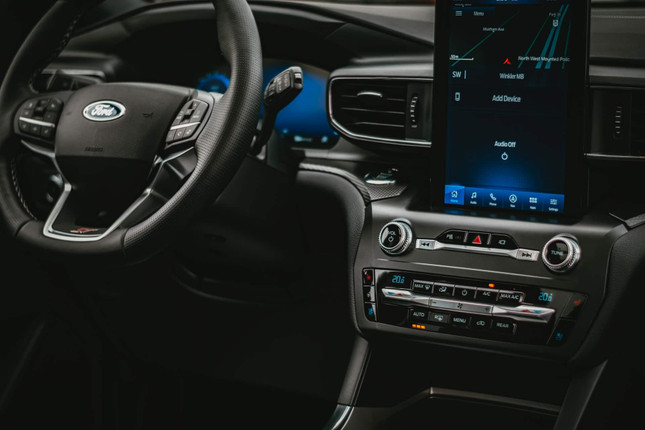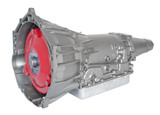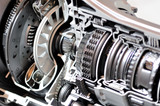What Is a Dual Clutch Transmission?
A dual-clutch transmission (DCT) refers to a particular type of AMT (Automated Manual Transmission), i.e., one that uses 2 clutches to 'preload' the next gear before shifting. They are currently gaining a lot of favor since they offer higher performance and much better fuel economy than regular automatics.
In other words, dual-clutch transmissions are automated manual transmissions with 2 sets of gears. Each of these gears is operated by separate clutches.
Dual-clutch transmissions are designed to combine the ease-of-use and smooth transitions that automatic transmissions are loved for with the performance benefits that manual transmissions bring to the table.
Dual-clutch transmissions operate smoothly via several in-built transmission control modules or computers. The computers conveniently do away with the need for you to change gears, making the entire process automated manually.
One of the clutch discs is for odd-numbered gears, while the other is for even-numbered gears. These gears go in order – like with sequential transmissions – but do not rely on the driver to tell it precisely when to switch gears. The dual-clutch transmissions make the swap automatically.
Most vehicles with a dual-clutch transmission are also equipped with a manual mode. Drivers can use paddle shifters to manually shift gears if they like. This is why dual-clutch transmission is sometimes referred to as a hybrid transmission system, i.e., not fully manual or fully automatic.
The Short History/Evolution of Dual Clutch Transmissions
Most DCT enthusiasts regard Adolphe Kégresse as the father of the dual-clutch transmission. In the late 1930s, just before World War II, the French engineer searched keenly for an efficient way of automating gear selection in vehicles.
He eventually invented the concept on which the modern-day dual-clutch transmissions are built. But at the time, the Second World War prevented the engineer from implementing this brilliant idea.
The idea began to take shape in the 1980s, with racing as the impetus, much like most automotive improvements. Porsche is one of the first automotive companies to develop the Porsche Doppelkupplungsgetriebe (PDK) transmission in the 1980s.
The automotive company used this transmission with profound success with its 962 race cars. A 962 vehicle with a PDK transmission won its first World Sports Prototype Championship race in 1986 at Monza, Italy. That was how this vehicle was heavily heralded as one of the best cars of all time.
The PDK dual-clutch transmission has become a staple in most Porsche streetcars. Several other performance-oriented automobiles also use dual-clutch transmissions.
How Does a DCT (Dual Clutch Transmission) Work?
A dual-clutch gearbox comes with 2 clutches but has no clutch pedal. The traditional manual transmission requires you to use a clutch pedal for clutch engagement. But with a dual-clutch transmission, electronics (computers) control clutch engagement by issuing commands to the internal hydraulics of the transmission.
Each of the 2 clutches is linked with one or the other of the 2 internal transmissions. As a rule, one of the transmissions houses the even-numbered gears while the other controls the odd-numbered gears. One of these transmissions also accommodates the reverse gear for backing up.
As you drive a vehicle with a dual-clutch transmission – depending on the gear you select – one of the internal transmissions becomes engaged with the engine and powers the automobile. The other internal transmission is disengaged from the engine but has already pre-selected the next gear for use.
This change between gears is incredibly swift and almost unnoticeable as it occurs without interrupting or cutting off the torque flow through the driveline.
How Does a Dual Clutch Transmission Differ from Other Automatic Transmissions?
The dual-clutch transmission bears great similarities with the automatic transmission cockpit. There is no other similarity beyond that.
This is because a dual-clutch transmission is much more common with a manual transmission than with automatic transmissions. One of the major advantages of a DCT is its economic fuel-saving benefits. Since the flow of power from the engine is never interrupted, the fuel efficiency rate significantly increases.
Automotive experts estimate that a 6-speed DCT is capable of increasing fuel efficiency by up to 10 percent compared with a standard or regular 5-speed automatic transmission.
This is mostly because torque converters in typical automatic transmissions are designed to slip. This prevents all of the engine’s power from getting transferred to the driveline all the time, especially during acceleration.
How is a Dual Clutch Transmission Different from a Manual Transmission?
When you change gears while driving a car with a manual transmission, it takes about half a second to complete this action. This doesn't sound like much, but it cannot be compared with the 8 milliseconds it takes some DCT vehicles to do the same. This is the efficiency that most DCT vehicles offer.
The increased speed you experience when changing gears in a vehicle with a dual-clutch transmission makes it faster than its manual transmission counterpart. In truth, a DCT works in the same way that regular manual transmission does.
A DCT comes with auxiliary and input shafts that house the gears, as well as a clutch with synchronizers. However, the major difference between a manual transmission and its DCT counterpart is that it does not come with a clutch pedal.
There is no need for a clutch pedal with a DCT because the solenoids, hydraulics, and computers carry out this shifting operation. You can still instruct the computer system to perform specific actions via paddles, gear shifts, and buttons.
This helps to improve your overall experience significantly. This is why the DCT remains one of the most dynamic – and beloved – types of acceleration available.
Advantages of Dual Clutch Transmissions
The following are some dual-clutch transmission benefits you should know:
- Improved fuel economy
- Smoother performance than manual transmissions
- Freedom to relax or shift
- Faster shifts
- No need for neutral
- More horsepower at the wheels
Every product with benefits also has a few problems that must be noted. Here are the disadvantages of DCTs:
- Potential for jerkiness
- Expensive to replace
- Steep learning curve
- Not ideal for heavy-duty pickups
- Few automobiles equipped with a dual-clutch transmission
So, is a dual-clutch transmission good? It depends on your personal conviction, given that Ford has not recovered from the fallout from its DCT – i.e., Powershift transmission fitted to the Focus and Fiesta and heavily marketed as an automatic transmission – issue.
However, Ford has had tremendous success with another model that uses the DCT. So, you can find out for yourself and see if a dual-clutch transmission vehicle is for you.
But for the most part, a dual-clutch transmission is good, but you can find out for yourself.
Cars That Come with Dual Clutch Transmissions
Many current high-performance vehicles offer dual-clutch transmissions. This include:
- Audi R8
- Nissan GT-R
- Ford Mustang Shelby GT500
- Porsche 718 and 911
However, dual-clutch transmissions are not severely limited to high-end sports vehicles. DCTs also come with the following vehicles:
- Kia Forte GT
- Volkswagen GTI, etc.
DCT technology has also been used in the Plug-in Hybrid and Hyundai Ioniq Hybrid models.
Conclusion
The dual-clutch transmission is not fully automatic or fully manual. The advancements of conventional automatic transmission technology appear to be threatening the popularity and future of DCTs.
Some experts are even predicting that fewer models will offer dual-clutch transmission technology in the future. But the owners of vehicles currently equipped with DCTs enjoy rapid gear changes and negligible torque loss.




